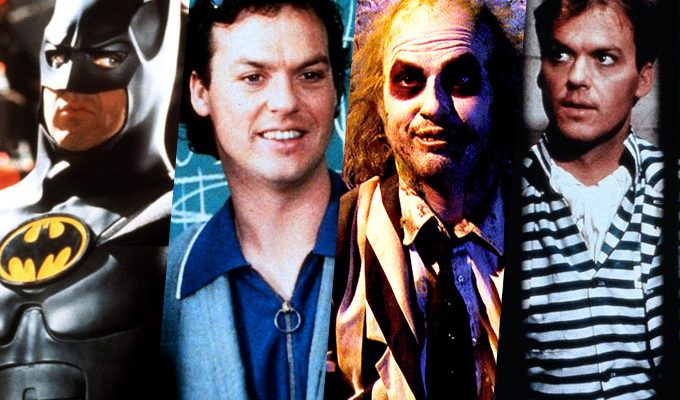
“The Dream Team” (1989)
A fun and surprisingly uncondescending mental illness comedy, “The Dream Team” is probably director Howard Zieff’s finest hour, depending on how passionately you advocate for “My Girl” or “Private Benjamin.” And it gives Keaton a classically Keaton role, the fundamentally good guy trapped by his own manic instincts. Here his uncontrollably violent outbursts have lost him his girl (Lorraine Bracco) and landed him in a mental institution. However a pioneering doctor brings his therapy group of four mismatched, variously afflicted patients on a field trip, gets conveniently knocked unconscious, and the guys have to put their differences and their psychoses aside to rescue him and to evade capture by the police. It’s the type of convoluted caper that could quickly become wearing were it not for the freshness of the playing and the chemistry (especially between Christopher Lloyd and Keaton) and Keaton has, in many ways, the hardest role. At all times he is supposed to be the most volatile and potentially dangerous of the bunch, yet he’s also the straight man, the leader/planner, and the one least prone to delusions. But he negotiates it well, bringing both pathos and that hair-trigger changeability that makes him so eternally watchable and surprising as an actor.

“Jackie Brown” (1997) / “Out of Sight” (1998)
Keaton plays Ray Nicolette in both these films, and while both are of very different sensibilities (Quentin Tarantino vs. Steven Soderbergh ), somehow the little nod of consanguinity between the two Elmore Leonard adaptations works well. And that’s possibly because it’s specifically Keaton in the role (and also admittedly his part in “Out of Sight” is only cameo-level), and his twitchy take on Nicolette suits the smooth sax-blast of Soderbergh’s film almost as well as it does the janglier, showier Tarantino picture. Laudably, Tarantino insisted that Miramax not charge Universal for the character rights to allow him to appear in “Out of Sight,” thus allowing this rare example of universe-building across the work of two different auteur filmmakers. For his part, Keaton seems to have a great time in the role, making it his own particularly in the more substantial screen time of “Jackie Brown,” where he again gets to play tic-ish, unpredictable, and yet fundamentally decent, on the side of good if not exactly the law he nominally serves. Which means that in scenes like the one below, Keaton plays the character as both bad cop and good cop simultaneously (and is still matched beat for beat by Pam Grier).

“Pacific Heights” (1990)
So yes, a lot of this list is fuelled by nostalgia, and we’re prepared to attract some ire over the inclusion of this disposable John Schlesinger pic over some other dearly-held titles (“Gung Ho“). Then again, what’s the point of doing this job if we can’t occasionally unilaterally impose our will on lists like this? It’s perhaps the whitest movie ever made, a thriller dealing with every middle-class yuppie’s worst nightmare: a lousy tenant for their exquisite 19th century San Francisco home. But dammit, we have a great deal of residual affection for “Pacific Heights,” and wanted to feature, in among the comedies, the other thing that Michael Keaton’s wired presence has always made him good for: psycho roles. If Keaton is characterized by a kind of split personality whereby incipient violence, even insanity is what fuels his humor, then the flip side of that is when he’s asked to go full psycho, he’s got a lot of gas in the tank. And full psycho he duly goes here, playing a sociopathic con man who ends up living in Melanie Griffith and Matthew Modine’s (told you it was white) house and turning their dream home into a hellish nightmare, before Griffiths’ character tracks him down and exacts revenge. As off-the-leash as he goes here, Keaton, while not restrained exactly, certainly understands how to hold back some of his mania to increase the menace. And nobody sits in front of a staticky TV playing with cockroaches and razor blades like Keaton. Nobody.

